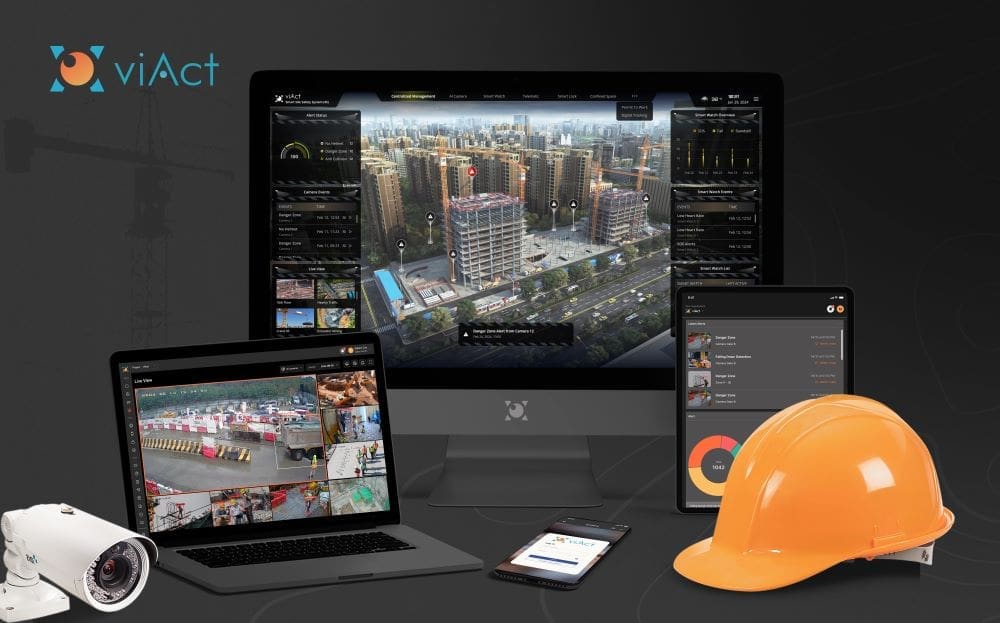An offshore oil rig worker faces an unusual situation—a sudden pressure spike in one of the drilling systems. Instead of paging a supervisor and waiting for a response, the worker opens a conversational AI-powered chatbot on their device and asks, “What should I do about this pressure reading?” The chatbot, designed with industry-specific safety knowledge, responds instantly: “The pressure is above safe limits. Reduce output on Valve A immediately and monitor.” The worker follows the guidance and stabilizes the pressure, avoiding a potentially dangerous escalation.
Conversational AI-based safety chatbots go beyond just providing immediate answers—it’s transforming safety culture by fostering continuous communication and knowledge-sharing in an environment as high-stakes as oil and gas, where every second counts. Conversational AI chatbots provide quick responses for alerting teams with regard to emerging hazards, log incidents in real-time, and recommend preventive measures based on past data. This means workers are no longer alone in critical situations; they have a virtual assistant who “learns” from ongoing interactions and adapts to specific needs on-site.
This is the power of conversational AI in action that these intelligent chatbots leverage advanced natural language processing (NLP) and machine learning, allowing oil and gas workers to communicate with a digital assistant that understands their questions, identifies risks, and provides immediate, actionable advice. From guiding safety procedures to monitoring compliance, conversational AI is shifting the oil and gas industry from reactive to proactive safety management.
Setting Safety Benchmarks in Rig Operations
In a scenario when a drilling operator receives a real-time alert from an AI-powered monitoring system specially designed for oil & gas units that detects unusual vibration levels in one of the drill pipes. Instead of relying solely on instinct or delayed human intervention, the system analyzes the data, identifies a potential risk of equipment failure, and instantly notifies the operator to take corrective action. In moments like these, advanced technologies are pushing the envelope of safety, setting higher benchmarks by transforming reactive measures into proactive ones. Rig operations which are notorious for their complexity and high-risk environment, require constant vigilance and strict adherence to safety protocols. But what if these safety standards could evolve to be smarter, adaptive, and predictive? Today, the oil and gas industry is doing just that—setting new safety benchmarks that make rig operations safer and more efficient than ever before by using tools like conversational AI.
Furthermore, these benchmarks go beyond automated alerts. Modern rigs now leverage sensors, IoT devices, and AI-driven analytics to establish safety protocols that adjust to real-time conditions. For instance, wearable devices monitor vital signs of workers on-site, alerting them to rest or hydrate if their levels show signs of fatigue—a common cause of accidents. Safety is no longer a static checklist; it’s a dynamic system that adapts to the real-time needs of each worker, operation, and environment. By integrating these tools, the industry is not only preventing incidents but also creating a culture of safety that values proactive care and responsiveness. Ultimately, setting these new safety benchmarks means empowering every worker with the knowledge and tools they need to respond quickly and confidently. With innovations that predict, protect, and respond to risks on the fly, rig operations are achieving new levels of safety that reduce incidents and improve productivity. This benchmark-driven approach redefines what’s possible in safety, paving the way for a safer, more resilient future in oil and gas.
Intelligent Responses for Red Zone Management
In the high-stakes environment of oil rigs and industrial sites, the “Red Zone” — areas with high risk for accidents due to proximity to heavy machinery, high-pressure systems, or hazardous materials — demands an unwavering focus on safety. Traditionally, managing Red Zones has relied on strict guidelines, visual markers, and human vigilance. But now, intelligent responses powered by AI are transforming Red Zone management, creating a safer and more controlled space for workers.
AI-driven red zone monitoring system that constantly monitors Red Zone areas through video analytics and IoT-enabled sensors like that of viAct when integrated with conversational AI-based chatbots prevents workers from inadvertently stepping into a restricted area. Similarly, when a machine operator moves heavy equipment too close to a designated danger zone, the system triggers an immediate alert. It can even provide automated instructions: “Caution: You are in a restricted area. Please move to a safe distance.” These real-time, intelligent responses prevent risky situations from escalating, helping workers stay alert without the delay of manual interventions.
Beyond instant alerts, intelligent Red Zone management systems analyze patterns and adapt safety measures accordingly. For example, if the system detects repeated entries into a Red Zone during certain times or activities, it can prompt a review of workflow layouts or worker routes, suggesting adjustments to prevent future risks. It also logs these instances, providing valuable insights for safety managers to refine protocols and reduce hazards over time.
By integrating intelligent responses into Red Zone management, companies can create a dynamic safety environment where the focus isn’t solely on reacting to issues but actively preventing them. This approach protects workers in real-time and supports continuous improvement of safety practices, setting a new standard for risk management in high-risk industries.
Empowering Field Workers Through Proactive Safety Culture
Empowering field workers through a proactive safety culture is essential for enhancing operational efficiency and safeguarding lives in high-risk environments like oil and gas operations. In this context, COO viAct; Hugo Cheuk says “By fostering an environment where safety is prioritized and integrated into daily routines of oil & gas workers, these sites can significantly reduce incidents and enhance worker confidence using Conversational AI tools which acts as a real-time ally for field workers.”
When every worker has access to an intelligent conversational AI assistant that provides immediate safety guidance, answers questions about protocols, and alerts them to potential hazards, this equips workers with the knowledge they need to make informed decisions on the spot and also encourages a culture of communication and collaboration. When workers feel supported and empowered by technology, they are more likely to engage proactively with safety practices, report unsafe conditions, and take responsibility for their own safety and that of their colleagues.
Furthermore, by continuously collecting data through these interactions, conversational AI helps organizations identify trends, areas for improvement, and emerging risks, enabling them to refine safety protocols and training programs. This ongoing feedback loop fosters a culture of continuous improvement, where safety is seen not just as compliance but as a shared responsibility among all employees.
In conclusion, the integration of conversational AI into safety practices not only empowers field workers by providing them with immediate access to crucial information but also cultivates a proactive safety culture that prioritizes well-being and operational excellence. As organizations continue to embrace these technologies, they are not only enhancing safety outcomes but also building a resilient workforce prepared to tackle the challenges of today’s demanding work environments.
Gary Ng, CEO and Co-Founder of viAct comes with a background of building engineering who turned into AIpreneur with inception of viAct in 2016. He has 10+ years of experience in implementing technological innovations in construction industry. Before viAct, he was the Managing Director of 3D fashiontech EFI Optitex. Also rewarded as the best regional senior executive in NASDAQ listed technology enterprise Stratasys. With his ultimate strength of analytical thinking & strategic decision making, Gary was also the advisory board member for SXSV in his early career. Ng believes in the concept of transferring knowledge from experienced to youngsters and is a renowned academic professional. Currently he is a visiting faculty professional at The Hong Kong Polytechnic University. Ng is also an active public speaker & preacher of AI driven sustainability in workplaces.






